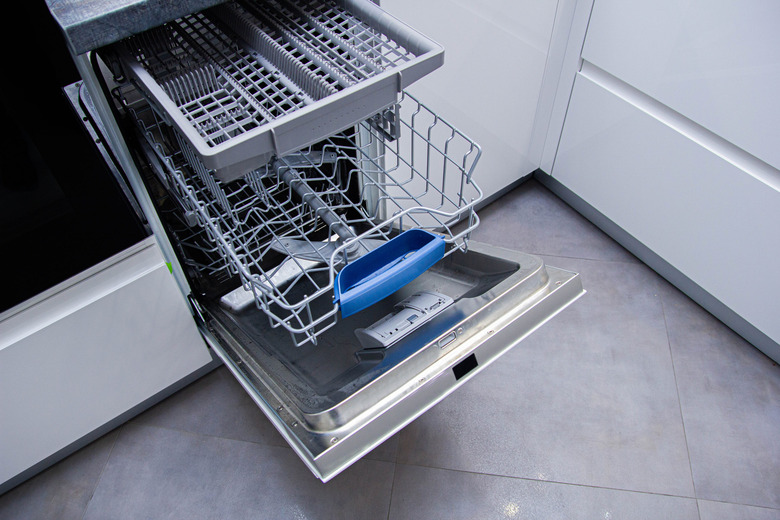Can You Use Draino On A Dishwasher Pipe?
Drano is for clearing clogged sink, tub and shower drain pipes. That's it. You should never put it in the toilet, and you definitely should never try to unclog a dishwasher drain with Drano.
A dishwasher has a pump that actively flushes water out of the appliance. When the dishwasher won't drain, there may be something wrong with the pump. Most of the time, that isn't the problem, though. It's more likely that there's something clogging the drain filter in the bottom of the appliance or gumming up the garbage disposal, which is where the drain hose usually terminates.
Read more: Can You Use Drano in a Toilet
Treat Drano With Respect
Drano's easy availability belies its potential dangers. The main ingredient in every Drano product is sodium hydroxide, otherwise known as caustic soda or lye. This chemical is on the opposite end of the pH scale from hydrochloric and sulfuric acid. Even though it's caustic and not acidic, it's just as dangerous.
When mixed with water, sodium hydroxide generates a large amount of heat. This heat, along with the chemical's ability to convert grease into water-soluble soap, can clear out pipes. The heat is intense enough to damage plastic pipes, however, and the drain hose from a dishwasher is not only plastic, it's relatively thin and fragile.
Damage to the drain pipe may be the least of your problems if you try to unclog a dishwasher drain with Drano. The caustic chemical can damage the drain pump, and if it doesn't all go down the drain, some of it might splash back on the dishes when the dishwasher is running. You don't want to ingest sodium hydroxide when you're eating your next bowl of soup.
When the Dishwasher Won't Drain
If there is standing water in the dishwasher after the cycle is complete, the first thing to do is take out the dishes and the racks and clean the filter in the bottom of the appliance. You're supposed to do this regularly, and if you didn't know that, it's probably full of food particles. Once it's clean, the water should drain during the next cycle.
Another easy fix for dishwasher draining problems is to run the garbage disposal, according to American Home Shield. If you have one, the dishwasher likely drains into it. If the disposal is full of unground food, it can make the drain hose back up. It's best to do this while the dishwasher is running so the drain pump can drain the water.
A third trick is to check the air gap. If you have one of these, which isn't required everywhere, you'll see a chrome, dome-shaped fitting on the back of the sink. Pull off the cap and clear whatever debris you find.
A Safe Alternative to Drano
Clogs inside a drain hose are usually easy to clear manually by disconnecting the drain hose from the garbage disposal or sink tailpiece, lowering it into a bucket and probing inside the hose with a piece of wire or something similar. Of course, chemicals are easier to use, and if that's your preference, use a combination of vinegar and baking soda.
Uncover the drain in the bottom of the dishwasher by removing the filter, then pour in 1 cup of baking soda and follow this with 1 cup of vinegar. The combination produces a carbon dioxide fizz that loosens grease and other deposits safely while deodorizing as a bonus. Let the fizz continue for about 30 minutes, then pour 2 or 3 cups of hot water down the drain and run the dishwasher through a rinse cycle.
Read more: Can You Add Drain Cleaner to a Dishwasher?
